By Ken Wright
“We shall not be content with a defensive war,” stated British Prime Minister Winston Churchill during his speech to the House of Commons immediately after the evacuation of the British Expeditionary Forces from Dunkirk on June 4, 1940. That same afternoon, he wrote to General Sir Hastings Ismay, his right- hand man in the War Cabinet Secretariat, “We should immediately set to work to organize self contained, thoroughly equipped raiding units. Enterprises must be prepared with specially trained troops of the hunter class who can develop a reign of terror down the enemy coasts leaving a trail of German corpses behind them.” With pressure from Churchill, the famous British Commando units were born.
Commandos in the Pacific
Negotiations began secretly between Australia and Britain to establish special units similar to the British Commando model. A British military mission arrived in Australia in November 1940 to set up a training scheme in secret. The training was to be conducted by Australian and New Zealand officers specially detailed for the task. Each soldier had to be a volunteer, be physically fit, possess individual initiative, and be of above average intelligence. They were trained to accept responsibility far in excess of their rank and to be able to fend for themselves under the most severe conditions. British Commandos were trained to carry out sudden sneak attacks and then withdraw back to their bases, whereas the Australians were taught to stay behind, live off the land, and carry out guerrilla warfare against an attacking enemy. They were called Independent Companies and were not officially known as Commandos until 1943.
Twenty-year-old Ralph Coyne was training in the Australian Imperial Forces (AIF) to be a signaler during March 1941 and was expecting to be posted to the Middle East. “One day on parade, a Major asked for volunteers to serve in a small group to operate in enemy territory,” he remembered. “Of the 500 on parade, 12 of us stepped forward. We were immediately put on a truck and taken to a secret training area at Wilsons Promontory in Victoria. The next morning we were told we were going to receive very tough training and at the end of a month, those who are not suitable or didn’t wish to stay could return to their original units without shame. At the month’s end, one third had returned to their units and those of us who completed the course were issued British uniforms. And, as I was in the 2/4 Independent Company, I proudly attached the dark blue double blue diamond colour shoulder patch to my new uniform. We had three infantry platoons, each of 67 men, a signals section of 36, 20 engineers, 11 medical and a company HQ of 12. We were transferred to the top part of Western Australia and split up into platoons so we could patrol the major rivers of the Northern Territory stretching from the Western Australian border to the Gulf of Carpentaria.”
The Japanese Invasion of Timor
Before the war, the island of Timor, about 300 miles from the northwest corner of Australia, had been politically divided by two colonial powers. The western half of Timor was part of the Dutch East Indies with Koepang the capital. The eastern half, with Dili as its capital, was a Portuguese colony. The island was of strategic interest to the Japanese.
Pearl Harbor was only the beginning of Japanese military expansion in Southeast Asia and the Pacific. The Japanese Army invaded Hong Kong and the Philippines and landed troops on the northeast coast of Malaya on December 8, 1941, sweeping all before them and capturing Singapore, the last bastion of British rule and prestige in Asia.
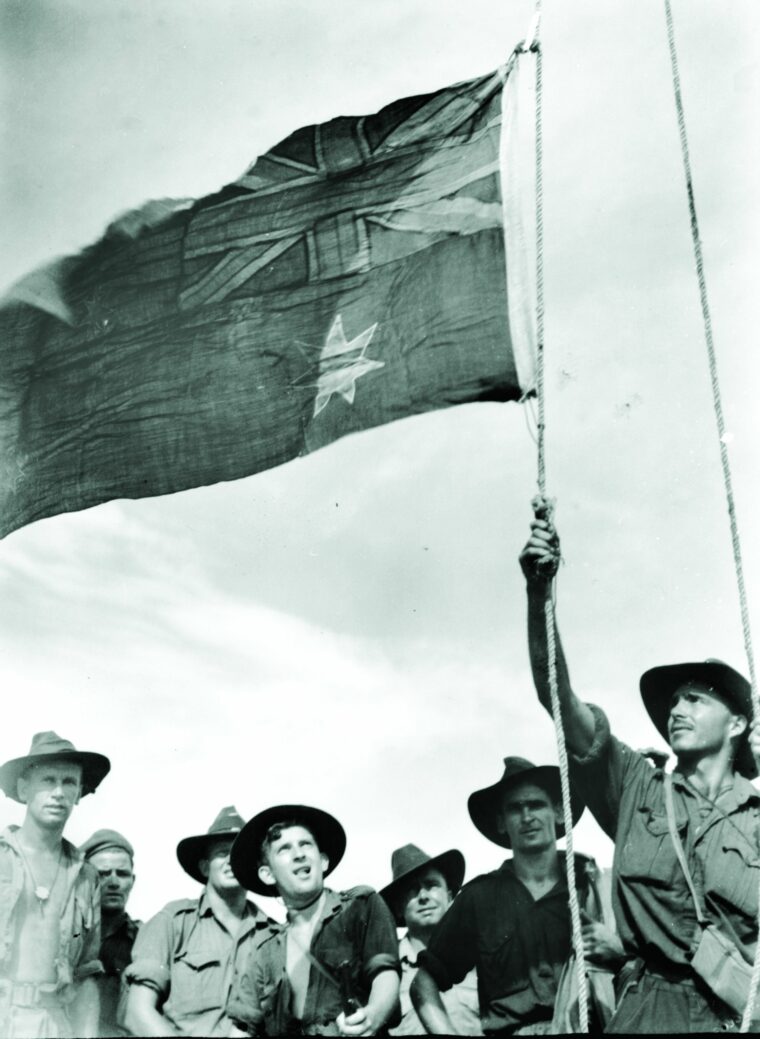
Fearing possible Japanese activity in the region, Australia sent to Timor on December 12, 1941, the 2/40 Battalion AIF with supporting units of the newly trained 2/2 Independent Company and Lockheed Hudson bombers from No. 2 Squadron RAAF (Royal Australian Air Force) to bolster the Dutch forces around Koepang. An arrangement was made with the neutral Portuguese to unofficially allow most of the 2/2 to be stationed near Dili. Code-named Sparrow Force, the troops were soon to see action.
Japanese forces continued their seemingly unstoppable advance and on January 23, 1942, overwhelmed the small Australian garrison at Rabaul on the island of New Britain, which was the capital of the Australian-controlled territory of New Guinea. In early February 1942, Australian and Dutch forces surrendered the island of Ambon, another Dutch East Indies possession. Control of the nearby island of Timor by the Japanese would bring them within easy striking distance of Australia.
From Admiral Chuichi Nagumos’s aircraft carriers in the Timor Sea and from the 21st Air Flotilla base at Kendari in the Celebes, 188 Japanese aircraft struck a crippling blow against the major northern Australian port of Darwin in early February. Shortly afterward, the Japanese began their invasion of Timor on February 19-20, with landings on the northern coast of Portuguese territory and the southern coast of Dutch territory. Sparrow Force defended Koepang as best it could but was soon out of supplies and ammunition. With many wounded, most of the troops were forced to surrender on February 23.
Most of those who survived the battles and surrendered died from brutal treatment in Japanese POW camps. In Dili, the 2/2 and some Dutch troops along with remnants of the 2/4 were given the equally impossible task of overcoming a large, well-equipped Japanese force. The outcome was inevitable, forcing the survivors to retreat into the mountains with approximately 8,000 Japanese searching for them. The survivors of Sparrow Force were limited to carrying out hit-and-run ambushes, and as time passed their health suffered through lack of decent food, exhaustion, and sickness. They had to rely on whatever food they could get from the natives. During the fighting, they lost their only radio. Unable to communicate with Australia, they were presumed captured or dead.
“One night in mid-April 1942, two months after the rumored loss of Sparrow Force on Timor, our signalers were told to listen for radio calls claiming to be Australian coming from Timor,” remembered Coyne. “Although weak, we were able to pick up their signal, and after they answered a lot of personal questions we were able to identify them as the remnants of the 2/2 Independent Company in Timor. Their signal was being transmitted by a radio pieced together from scrap material and powered by an old car battery. The battery was being charged by a generator driven by a rope connected to a wheel turned by a native. The radio became known as ‘Winnie the War Winner’ after the British Prime Minister, Winston Churchill. HQ realized it was most imperative a reliable transmitter/receiver be sent to them as soon as possible.”
Landing on Timor
The Royal Australian Navy landed a party at night at a prearranged rendezvous, and several small vessels followed, landing ammunition, weapons, medical supplies, food, clothing, and radio equipment. They also evacuated the sick and wounded.
With the Japanese capture of New Britain, it was now even more vital that Allied HQ in Australia be informed of the enemy movements in Timor, and urgent arrangements were made for the 2/4 Independent Company to be withdrawn from its existing patrol areas. They were re-equipped with rifles, submachine guns, grenades, ammunition, sleeping bags, new uniforms, and other assorted stores that were being sent to reinforce the 2/2 Company on Timor. Late on the afternoon of September 22, 1942, Corporal Coyne and the men of the dark blue double diamond 2/4 Company boarded the World War I-vintage destroyer HMAS Voyager for the 30-hour trip to Timor. She was a small ship, and with approximately 14 tons of stores on her deck there was barely enough room for the 250 soldiers. They made themselves as comfortable as possible. It was a dark, moonless tropical night and most tried to sleep, as soldiers throughout the centuries have done when given the opportunity.
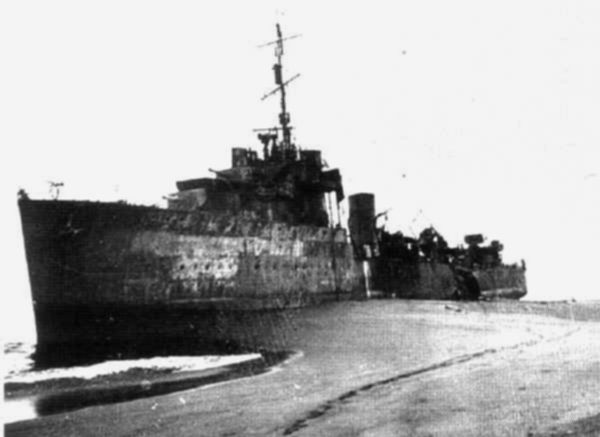
“At some point during the night,” said Coyne, “everyone on board became aware the engines had stopped and the main gun was being trained. The ship’s forward movement also stopped, and she began to roll listlessly with the waves. The dreaded word ‘submarine’ was quietly whispered amongst sailors and soldiers alike. The silence was eerie as the ship drifted in the darkness for about 20 minutes before the throb of the engines resumed and Voyager was underway again.
“We reached the south coast of East Timor at a beach called Betano in late evening on 23 September,” he continued, “and the Voyager’s captain, knowing the men had to scramble down nets slung over the side heavily loaded with equipment, tried to get as close to shore as possible. Each soldier carried a pack weighing approximately 80 pounds plus his rifle or machine gun, belts or magazines of ammunition, grenades, and a water bottle. Clambering down nets on the side of a swaying ship and stepping into a canvas boat in heaving surf was no easy task. Boxes of ammunition, grenades, heavy long-range radio sets, car batteries (to power the sets), battery chargers the size of a small car engine, gasoline, medical supplies, demolition charges, and Australian silver currency to pay the natives who were able to sell food.
“The destroyer lay with her port side parallel to the beach, and some of the soldiers were disembarking into the boats just above the ship’s port propeller. Suddenly, the alarm was raised as the heavy surf had caused the ship to swing on her anchor and was in danger of running aground hard ashore. The captain, Lieutenant Commander R.C. Robison, could have saved his ship with the use of both his engines, but it would have meant a horrible death for many of the soldiers above the port propeller. With no time to lose, the captain opted to leave the port propeller idle and went astern on the starboard screw, but unfortunately Voyager hit the beach. Once the soldiers and their stores had disembarked safely, the ship’s company worked desperately to free the ship embedded in the sand. To make matters worse, a strong southeast wind created large waves that forced the ship further ashore. Voyager was now stuck fast and left with no alternative. The decision was made to abandon the ship and destroy her using demolition charges.”
The next day, the Voyager was sighted by a Japanese reconnaissance bomber escorted by a Zero fighter and, defiant to the end, the destroyer’s crew shot the bomber down. By mid-afternoon, a series of Japanese bombing raids completed the Voyager’s destruction. Two days later, the stranded officers and crew were safely evacuated by two Australian Navy ships and returned to Australia.
500 Men
The 2/4 Company quickly moved inland and joined the remainder of the 2/2. The combined force totaled 500 men, and they began frequent and effective ambushes against the Japanese. Two observation posts were established overlooking Dili, so the arrival of enemy convoys could be reported to HQ in Australia. Reports such as the number of ships and naval escorts, troops and military equipment being unloaded, and where the troops were being quartered were transmitted to Australia. This information allowed General Douglas MacArthur at General Headquarters South West Pacific Area (GHQ, SWPA) in Australia to allocate RAAF bombers to strike specific targets identified by the Commandos.
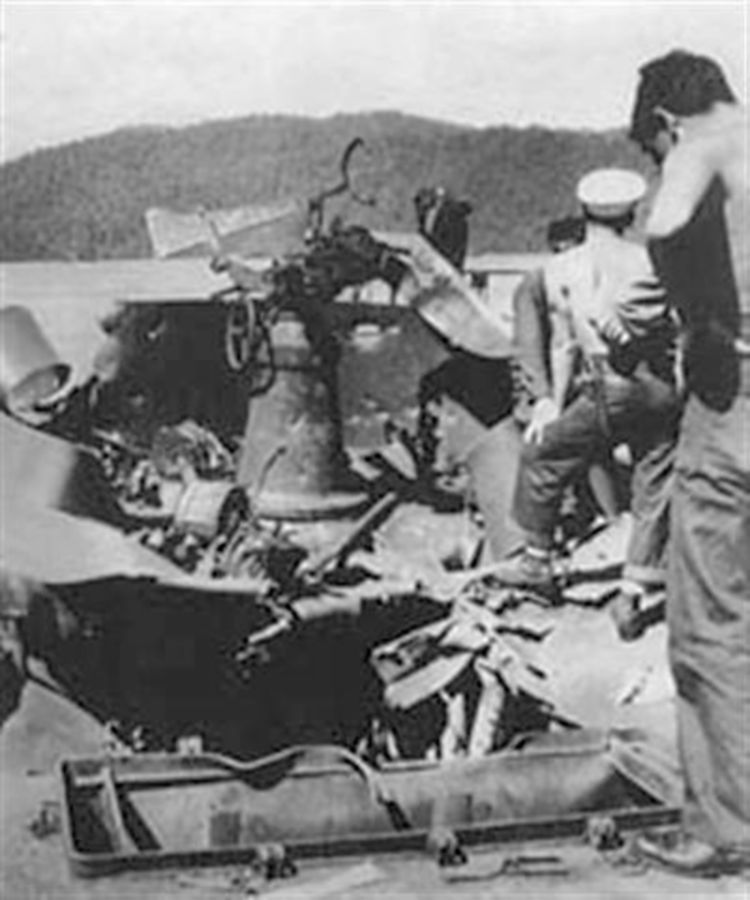
“We traveled single file away from the beach in the darkness,” recalled Coyne. “No one spoke. Around 1400 hours, word was passed down the line we were to camp, as it turned out, at an abandoned Portuguese military quarters at Hata Udu. Our platoon lieutenant wanted to send a coded message to HQ, so I unpacked our transmitter and took it into a nearby native grass hut and set up the radio (about the size of a large loaf of bread), put up the antenna and made contact with HQ in cipher and Morse code. A few minutes later, I could hear a Jap fighter in the vicinity. Moments later, there was the harsh rattle of machine gun fire, the bullets stitching a straight line across the hut floor and across the wooden table I was using, just missing the radio. I completed the message after the fighter had gone.
“Shortly after, the platoon moved westward to a small town called Ainaro nestled near high mountains,” he related. “There was a small simple church there, and we were told that the two Portuguese priests, Fathers Roberto and Peres, had been murdered by the Japanese for supplying the Australians with information. One had been doused with petrol and set on fire at his altar. For those of us new to war, this information gave us an insight into the type of enemy we were fighting. We followed a native track up into the mountains, and it was here we met native boys who approached the soldiers asking if we would take ‘criados,’ meaning a native servant for each soldier. We looked at the mountains and our heavy packs and agreed with enthusiasm. By late afternoon we all had a criados freeing us of our packs and allowing us to cope with the heavier military equipment. My criados was a young lad who I called Dicky.
“As time passed, we found it risky using other natives or mountain ponies. If we were attacked, the horses would bolt and the natives would drop the equipment and run away. We couldn’t afford to lose anything. Because most of our cross country walking was over mountain ranges up to 9,000 feet high, we had to discard some unnecessary equipment. Each native village we came to was thickly infested with fleas, and as we walked through the village, they rose up in a cloud smothering our legs and clothes. Initially, they drove us crazy, but after a while we got used to it just as the natives had. The beards we had grown were a haven for them.”
“Just to Survive”
Allied military commanders expected the Commandos to live off the land and had no idea that the primitive native farmers were accustomed to barely meeting their own food requirements and that supplying others was almost beyond their capacity. The local staple diet consisted of maize, some rice, and wild pig, which had excessive fat and little meat. To the Australian palate, the pig tasted revolting. The situation was made even more difficult as the Japanese placed a ruthless and heavy demand on the natives for food as well. They paid for it in a special printed currency, which was quite worthless. The natives knew it was worthless, but refusal risked punishment and possibly death.
The Commandos paid in Australian silver currency for what they could get; the money was prized by the natives. The Timorese feared the Japanese because of their brutality but liked the Aussie soldier, who was always friendly, and admired the Aussies’ fighting ability. They seemed to suddenly rise up out of the grass, and in usually short, sharp exchanges ambush the Japanese and disappear, leaving a trail of death behind them. In nearby Papua, New Guinea, the Imperial Japanese Army suffered another setback from November 1942, to January 1943, when Australian and American troops attacked and defeated them at Buna and Gona.
For almost four months, the 2/2 and 2/4 Independent Companies were able to engage two Japanese divisions. The combined effect of bombing by the RAAF and the constant ambushing by the small force of Australian soldiers hit the Japanese hard. In response, they increased their strength to approximately 20,000. Outnumbered and outgunned, the net began to close on the Australians. The Japanese launched a massive campaign against Sparrow Force, combining bribery and savage butchery of natives who were, or were thought to be, the major source of intelligence and suppliers of food to the Australian soldiers. This tactic proved successful, and in early December 1942, the 2/2 Company, deprived of the resources necessary to carry on effectively, had to finally be evacuated by the Dutch destroyer Tjerk Hiddes. This also forced 2/4 Company to abandon its coast watch, which greatly reduced the intelligence information available to GHQ, SWPA in Australia. The men of 2/4 retired to the mountains to carry out guerrilla warfare.
“We were fighting for our lives just to survive,” Coyne remembered. “The natives had been wonderful, frequently risking their lives to supply us with what they could in food, information and shelter. Unfortunately, the food was irregular and of such poor quality, our health began to deteriorate. In the limited time we had been here, a strong bond of friendship and mutual respect had developed between the Australians and the Timorese. Late one afternoon my section stayed in a deserted mountain village. As usual, we went to sleep in our sleeping bags fully dressed, boots and weapons beside us. At daybreak we awoke to find all the other huts occupied by native men, women and children. Our section was not even aware they had arrived.
“It was established the village had a curse or hoodoo on it and the fact we stayed there lifted the curse and they could come back to their village,” he said. “This was a great event for them, and a celebration feast in their traditional style was organized. We were asked to shoot four water buffalo for the feast. We argued against this as shots could be heard by the enemy and our position would be compromised. After much discussion, we agreed to shoot only two. To the primitive Timorese, sacrificing these valuable animals was meant as a great honour. The unfortunate creatures were led into the village and shot, but strangely, the villagers just left the dead buffalo in the hot tropical sun. The next day they began to bloat. We had expected a feast almost straight away but it wasn’t until midday on the fourth day the villagers plunged their knives into the carcasses. The stench was awful. Then, something occurred we least expected. The entrails were removed and brought to us with much bowing and gesturing. The soldardos (soldiers) were being honored. Everything was being passed by hand. We were trapped. We were each given a piece of the revolting mess and watched with expectancy. We couldn’t refuse without offending them. My stomach churned, but I smiled and ate my piece. Satisfied, the villagers turned their attention to the animals and began their feast while our stomachs turned cartwheels.”
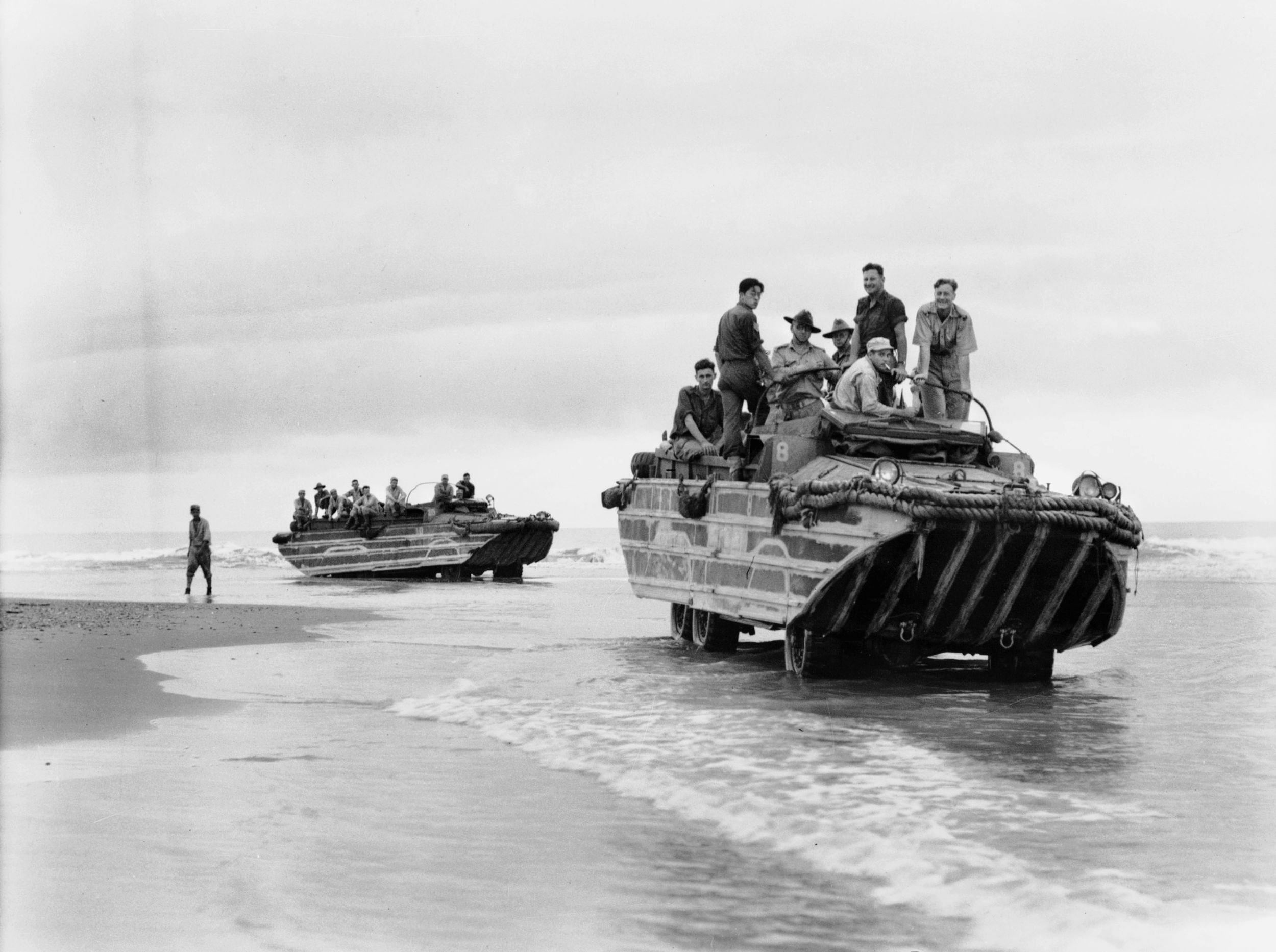
“Patrolling, Ambushing or Being Ambushed”
Coyne saw his share of combat during his time on Timor, as evidenced by one encounter with the Japanese. “One day we ambushed a group of 30 Jap soldiers, killing a number of them,” he commented. “Invariably, our ambushes were watched by natives hiding in the scrub. After the clash was over, natives rushed out with machetes and decapitated the dead or wounded Japanese. The heads were taken back to their village and placed on totem poles. I remember thinking those heads could quite easily have been Australian. After another ambush, a native came up to me holding two Japanese heads by the hair and offered them to me as presents. Naturally, I refused. A few minutes later, the men and boys formed a large circle in the village and began clapping and chanting while the women and girls began playing football with the two heads for about 20 minutes.
“We were constantly on the move, patrolling, ambushing or being ambushed. We practiced ‘Tetum,’ the native language which was spoken by half the population of East Timor and understood by a quarter of the remaining people. Our criados tried speaking English.”
Evacuation
As Corporal Coyne and the men of his section harassed the Japanese in short, sharp, and bloody ambushes, the military situation for the various sections of 2/4 operating in East Timor was fast becoming untenable owing to pressure from the Japanese forces and their native sympathizers. It was decided by HQ in Australia to evacuate all the 2/4, and a secret order was issued to every section leader to assemble at Quicras beach approximately 16 miles east of the original landing beach at Betano. All movement was to be in complete secrecy.
“After days of marching east, our criados began to suspect something was wrong,” said Coyne. “Somehow they suspected we were going back to Australia. They pleaded with us to take them with us when we left. We couldn’t answer them as we didn’t know what was happening ourselves. All we knew was we had to get to a rendezvous point by a certain date. Some time on 9 January, the sky began to darken, indicating a storm was brewing. We came to a large jungle swamp and waded across single file with water up to our waist. On the other side was the beach at Quicras. Waiting there were other sections of the 2/4. Once we were all assembled, the commanding officer, Major Mac Walker, announced that even before the evacuation of the 2/2 Company a month earlier all our sections had been under increasing attack. Our ops over Dili had to be abandoned, and our strength was now down to 250 men. And, as we were slowly being surrounded it was time to leave Timor. He also explained that General Douglas MacArthur had asked for a small volunteer force to remain behind to continue sending whatever intelligence they could to HQ in Australia. Thirteen men responded and moved back into the jungle to continue sending information. They were code named S-Force.
“Also on the beach were a group of Portuguese women, children and two men who were to be evacuated as well. The criados appealed to us to take them with us, but we were told by Major Walker this was not possible. We built a bonfire, and we lit it at 2230 hours as prearranged. The destroyer HMAS Arunta sent two boats through the raging surf to begin the evacuation. Imagine our feelings. We were glad to be leaving Timor, but to leave our faithful criados behind was very emotional and distressing. Many tough soldiers had tears in their eyes when they said goodbye. I gave Dicky my army pullover and any money I had. It was all I had to give.”
The women and children went in the boats first, and they were assisted beyond the strong surf. The night was passing quickly, but eventually all the civilians were aboard except the two Portuguese men. The storm was making it too dangerous to attempt further landings, and the ship’s captain signalled, “Am sending final lot of boats with orders to stand-to outside breakers. Swim for it. Time does not permit sending any more boats.” The captain had to leave before it was light enough for any Japanese reconnaissance aircraft to spot the ship. As it was, the last of the soldiers boarded just 45 minutes before daylight.
“We were ordered to throw our weapons into the swamp, and section by section we waded into the ocean and swam out to the waiting navy boats beyond the surf,” recalled Coyne. “They pulled us aboard and took us to the ship. We discovered later the two Portuguese men had shot themselves instead of coming with us. The sailors gave us clothing and as much food as we could eat but not being used to decent food and with the rising and falling of the ship as she raced through the waves towards Australia, most of us became seasick. Even sailors with many years experience at sea were sick.”
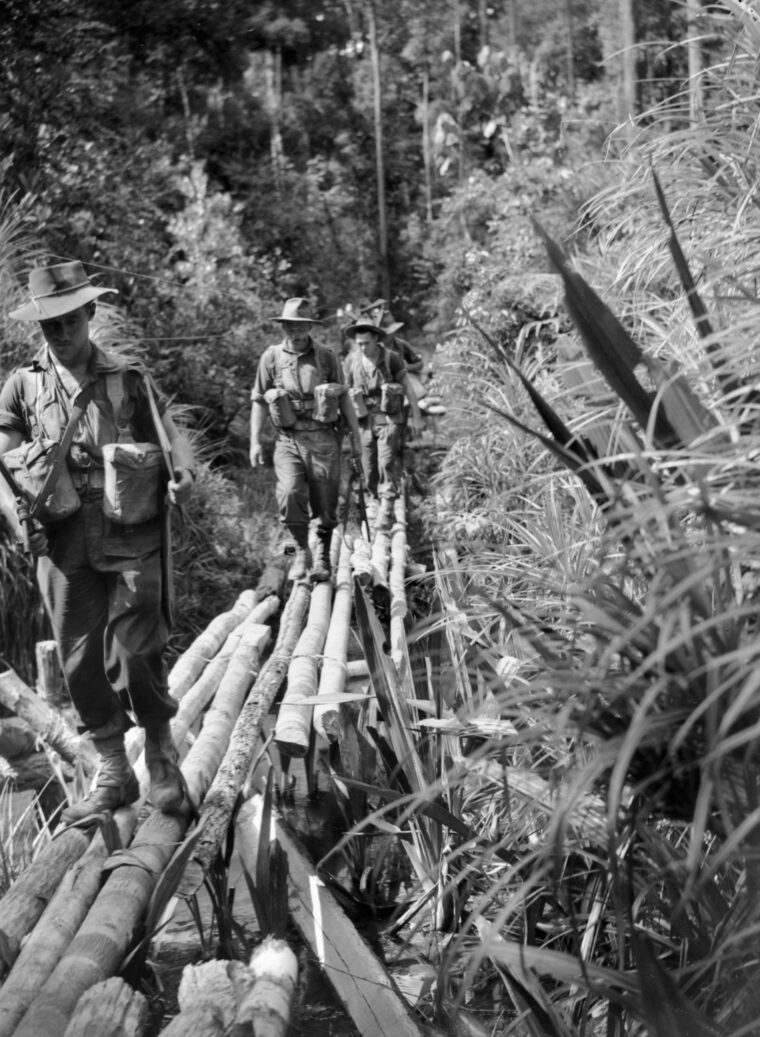
A Month of Rehabilitation
Below deck, the crockery was crashing down, toilets were blocked, and vomit was everywhere but somehow the crew managed to get the ship cleaned up before arriving back in Darwin in the late afternoon. A welcoming committee of approximately 200 smartly uniformed Army, Navy, and Air Force personnel waited at the wharf. They were shocked at the sight of virtually naked, bearded, unkempt, thin, and wild- eyed soldiers disembarking. To the men, all that mattered was they were back home in Australia and alive.
The members of 2/4, who had so proudly worn the dark blue double diamond shoulder patch, began a month of rehabilitation. Some were hospitalized, and all were given a month leave and then reassembled for training for service in New Guinea.
The members of S-Force were only able to remain in East Timor for a short while. Japanese forces had finally made it too difficult for them to operate, and on February 10 the remaining soldiers were evacuated by the American submarine USS Gudgeon. With the departure of S-Force, the Australian campaign in Timor ended. For almost 12 months the Australian soldiers had harassed the Japanese, killing an estimated 1,500 with a loss of 48 of their own. Most importantly, their activities led the Japanese to believe that Allied forces were going to attempt to retake the island. Battle- hardened troops from the 48th Division were diverted to defend Timor against possible invasion. The Timorese were to pay a heavy price for their support of the Australians. Many criados were murdered by pro-Japanese natives. Hundreds of loyal natives were imprisoned, tortured, or killed.
More Failed Missions
In Australia, General MacArthur was still anxious for more information about Japanese activity on Timor, so it was decided that small groups of three or four men would be dropped by air onto the island as required. Radio contact was arranged in Melbourne, and a special cipher was to be used. No message would be regarded as authentic unless it was first preceded by a code word. Over a two-year period between 1943 and 1945, nine parties were dropped by air or put ashore by submarine. The first party was captured complete with radio and cipher. The signaler was tortured and forced to send messages prepared by the Japanese. To warn those in Australia that the operation had been compromised, the signaler omitted the code word.
Unbelievably, this was ignored by the recipients and another drop date was made. This gross negligence was to cost the lives of many brave men. The second party was met by the Japanese at the drop zone and killed. Six more parties were sent and lost, but when the ninth one was being arranged, the team leader, Captain Arthur Stevenson, who had been a 2/4 corporal on Timor in 1942, received a warning about a possible Japanese ambush at the drop zone. He arrived a day earlier than arranged and approached the area to check if the information they had received was correct. He found the Japanese were waiting in ambush.
The Australian presence was soon discovered by the Japanese, and the Australians had to be evacuated by submarine. Timor remained under Japanese control until the war ended.
In 1973, Ralph Coyne and a party of former 2/4 members and their wives returned to Timor to meet their criados. News had been broadcast by Radio Dili that the Solardo Australie were returning. Some criados walked for three days to reach the towns the Australians were to visit. Sadly, Coyne’s criados, Dicky, was not among them.
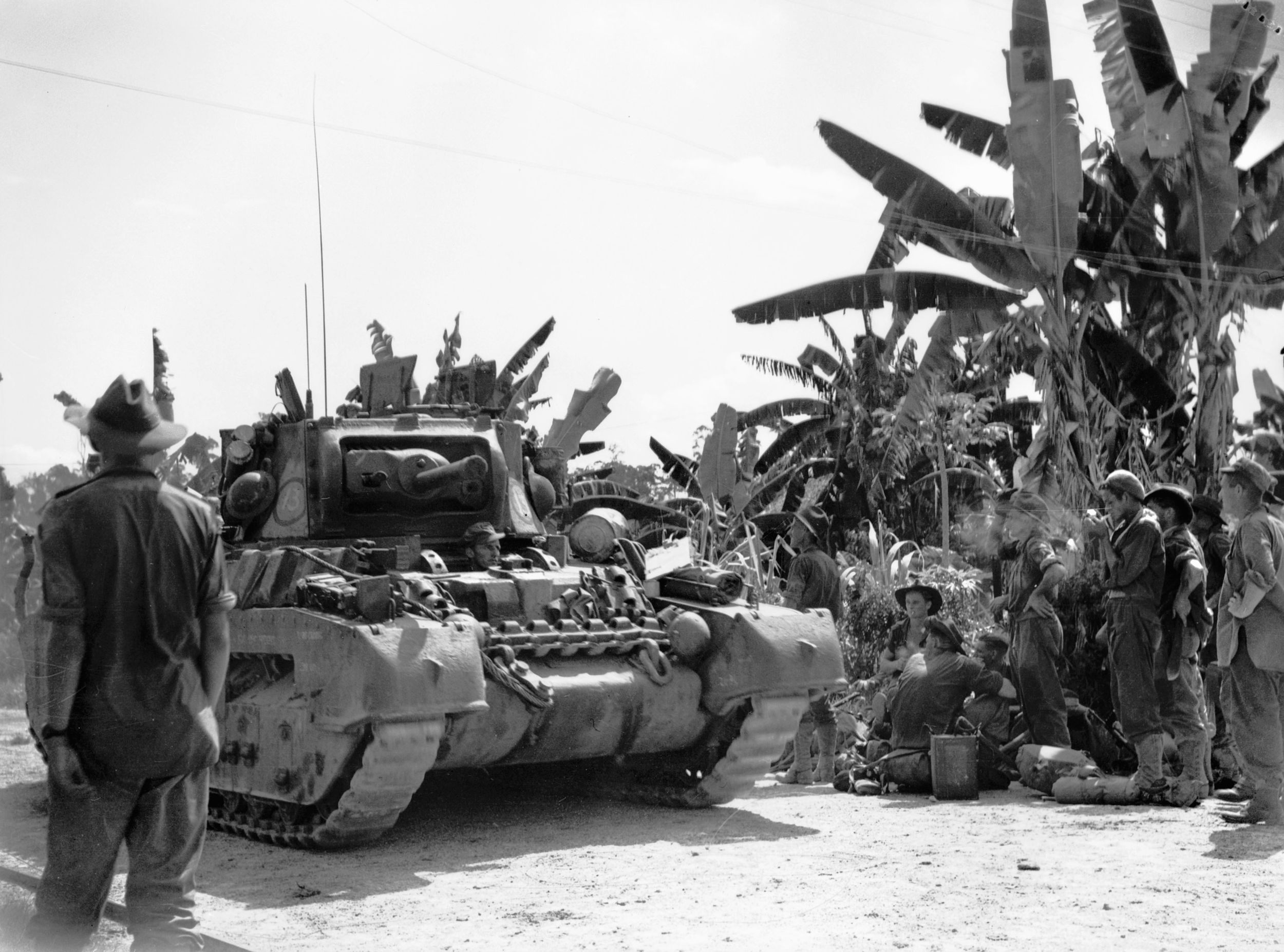
Japan Turns to New Guinea
After returning from Timor, Corporal Coyne and his fellow 2/4 members enjoyed their leave. “It was so good to be home away from the war and amongst friends and relatives but like all good things, it had to end,” he said. “There was still a war on so we were eventually recalled to duty, reformed, and sent to Canungra in Queensland, where we joined 9 Division, recently returned from North Africa, and commenced jungle training. We didn’t know it at the time, but we were going to be attached to 9 Division, 26 Brigade. It would be seven months before we were back in action again.”
While the Timor survivors were training in Australia, the Japanese had turned their military might toward New Guinea and had originally planned a two pronged attack, one by sea attacking the Port Moresby area, and the second over the Owen Stanley Mountains and along the Kokoda Track. Japanese losses at the Battle of the Coral Sea ended plans for the seaborne invasion of Port Moresby, but the overland attack began on July 21, 1942, when the first 2,000 Japanese troops, including Maj. Gen. Tomitaro Horii’s battle-hardened elite South Seas Detachment and engineers, began landing at Buna and Gona at the northern end of the Kokoda Track, a rugged mountainous jungle path covered in barely penetrable rain forest and kunai, a tall bladed grass.
Some of the mountain ridges soar to heights of 1,640 feet before plunging sharply back down to sea level. The humidity is oppressive, and sudden tropical downpours can turn jungle streams into raging torrents within a few minutes. Dangerous animals, reptiles, and insects, especially malaria-carrying mosquitoes, teem in the lush growth of the jungle. It is one of the most inhospitable places on earth. The actual track winds its way approximately 186 miles over the Owen Stanley Range and connects the north coast of New Guinea with Port Moresby on the south coast. If New Guinea fell, a direct invasion of Australia was possible.
The defense of this nightmarish track initially fell to the poorly equipped and trained militia of the Australian 39 Battalion, whose soldiers averaged only 18 years of age and had just finished basic training. They were derisively called “chocos” by the regular soldier, meaning they were like chocolate and would melt in the sun. However, these young soldiers, after a series of battles and through their sustained gallantry, held on long enough for units of the battle- hardened 7 Division just returned from the Middle East to join them.
The militia had been weakened by the jungle, the Japanese, malaria, and hunger. Many of them looked gray, old, and ill as they stood wearily in their stinking waterlogged foxholes, expressionless eyes deep in their sockets. They could hardly walk, let alone fight, but they and the 7 Division had taken on an invading Japanese force vastly superior in both numbers and firepower. Forty years later, one regular soldier remarked, “We were the real soldiers and they were just the bloody chocos, but Christ, they were brave.”
“The lethargic flow of the brackish water had also borne the incomplete, maggot-infested Japanese corpses to softly nudge them or float slowly past,” remembered another soldier. “You took your socks off only when clean socks arrived. And hungry! Just one feed a day. To all who fought here, this was a bastard of a place.”
The battle flowed back and forth with brutal savagery, the Japanese slowly forcing the Australians into what could loosely be described as a series of small offensives during the course of a withdrawal. Many times, the combat was hand to hand. Rifle butts smashed skulls, entrenching tools sliced open throats, and bayonets were rammed into stomachs with violent thrusts, twisted, and withdrawn. Men fought to stay alive or died gouging, clawing, and hacking at each other. Very rarely were prisoners taken by either side. Eventually, bolstered by reinforcements, the Australians dug in at Imita Ridge and waited for the Japanese to attack. A Japanese victory here would bring them within sight of their objective, Port Moresby.
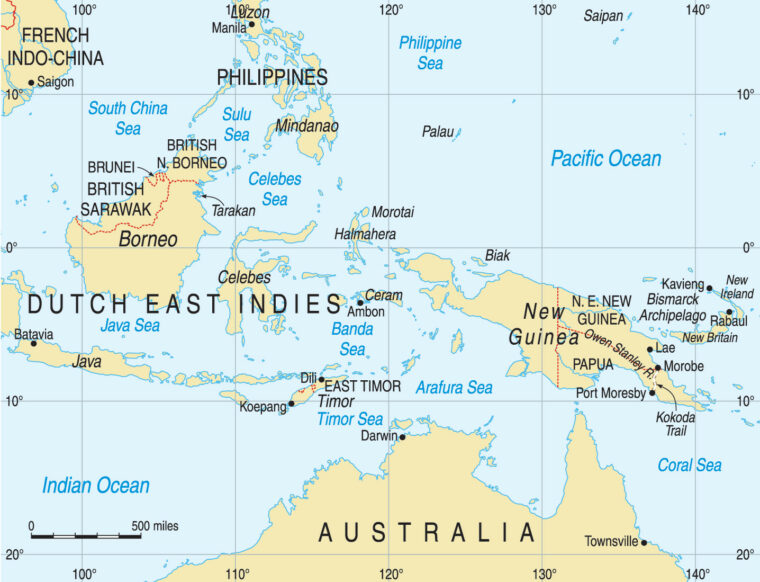
While the fighting was taking place along the Kokoda Track, a Japanese naval convoy landed 2,700 troops supported by several tanks at Milne Bay on the northernmost tip of New Guinea. Facing them were 8,824 combined Australian and American troops. This was the first time Australian militia, regular AIF, and Americans fought together. After 11 days of heavy fighting, they beat a common enemy. On September 5, Japanese ships evacuated what remained of their troops. They had suffered their first defeat, losing 311 dead and wounded, with 700 missing. The victory bolstered the confidence of the Allies and shattered the myth of Japanese invincibility.
Unfortunately, any jubilation was tempered by evidence of unparalleled brutality by the Japanese against the local natives and prisoners. These atrocities hardened the Australian and American attitudes toward taking any prisoners themselves. This was embodied in the phrase, “The only good Jap is a dead one.”
“Take Buna or Don’t Come Back Alive”
At Imita Ridge, the Australians waited 10 days, but the Japanese seemed unwilling or unable to attack. Tired of waiting, the Australians cautiously advanced on September 27, across a valley to Ioribaiwa where the enemy had reportedly dug in. All they found was an abandoned camp. On the very doorstep of the town they had fought so hard to reach, the Japanese had abandoned their position and were withdrawing over the Owen Stanley Mountains. Owing to their losses during the Battle of the Coral Sea, the Japanese Navy could no longer resupply the troops, and to make matters worse, the high command in Tokyo had decided to concentrate supplies and men on defending Guadalcanal in the Solomons against attacking U.S. forces at a time when the outcome of the battle on New Guinea hung in the balance. Maj. Gen. Horii was ordered to take what remained of his troops and return to Buna. It was a crushing psychological blow to the Japanese, but the order had to be obeyed. Horii died along with many of his troops during the retreat.
On November 2, the Australian flag was hoisted above the Kokoda plateau, but three more months of bloody fighting lay ahead before the Australians, joined at last by American troops, pushed on toward Buna and Gona. The Japanese soldiers received their last reinforcements and supplies at Buna, and they knew this was their last stand. Surrender or evacuation was out of the question.
The Japanese were militarily finished, and tactically it would have been less costly in lives to contain them and simply leave them to wither on the vine, but General MacArthur insisted on urgent offensive action and sent in more American troops. The Australians once again had to go on the attack, only this time with a less than enthusiastic American ally. This caused the campaign to bog down, and MacArthur sent his trusted subordinate, General Robert Eichelberger, to sort things out.
Eichelberger’s orders were chillingly simple. MacArthur said in part, “Bob, I want you to go out there and take Buna or don’t come back alive.” The Australians took Gona, but the Americans were stymied at Buna and were forced to seek help from the Australians. Finally, the Allies took Buna on January 2, 1943. MacArthur was delighted and played one of his many political and propaganda strategies by issuing a press release claiming American forces singlehandedly had taken Buna and won the campaign. Apart from completely ignoring the Australian effort, he disgracefully left out any reference to General Eichelberger.
With their training completed at Canungra, the Australian troops of 2/4 and 9 Division joined 26 Brigade. “In August 1943, seven months after returning from Timor, we were on our way to New Guinea,” remembered Coyne, who by then was promoted to sergeant. “We landed at Milne Bay, the scene of fierce fighting and Japan’s land defeat back in August-September 1942. Although we didn’t know it at the time, we were to take part in an amphibious landing near Lae.”
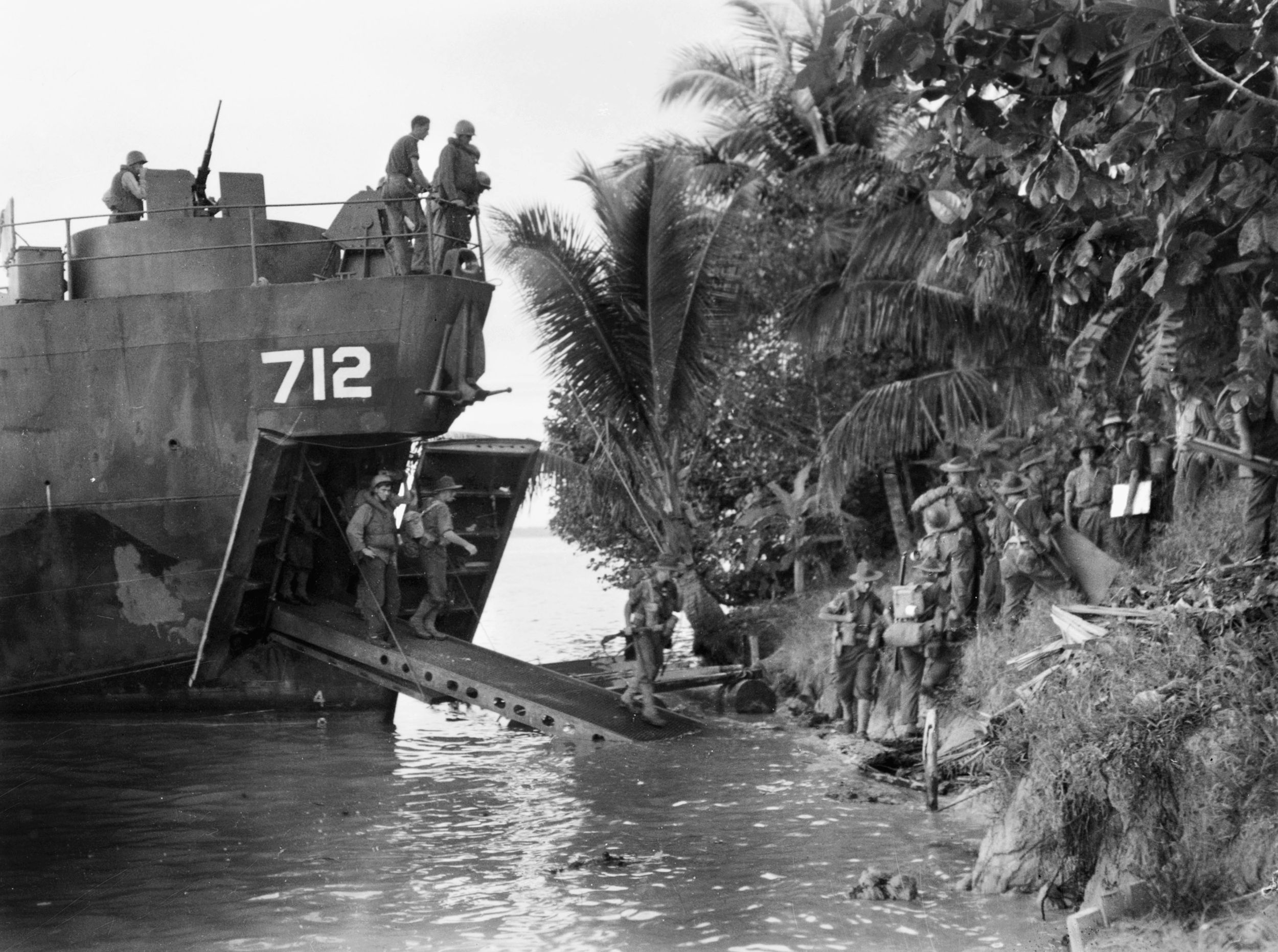
The troops of 26 Brigade engaged in training exercises, firing and testing weapons, patrols, unloading stores, lectures, and physical exercises. For relaxation, the troops packed into the makeshift open-air picture theater and watched the only film available, Seven Sweethearts, starring Kathryn Grayson.
On September 4, the day of departure for Lae, Coyne was attached to A Platoon. He found his unit divided into three sections, and he boarded along with other troops of the brigade. As their ship, the American LST 471, cleared Milne Bay, they joined Rear Admiral Daniel E. Barbey’s Task Force 76. Code-named Operation Postern, the task force comprised 12 destroyers, 50 transports, and three minesweepers with the U.S. Fifth Air Force and RAAF providing fighter protection and support for the landing.
The Allied planning for the capture of Lae involved a drive by the Australian 9 Division westward along the coastal plains from selected beaches approximately 16 miles east of the objective together with a thrust by the Australian 7 Division southeast from Nadzab along the Markham Valley to Lae. The estimated strength of enemy troops in the Lae area was between 6,400 and 7,250 with a further 7,000 believed to be in the Salamaua area.
The men resigned themselves to the heat, humidity, and cramped conditions aboard the transports ploughing a course around the eastern tip of New Guinea, through the Solomon Sea, and onto the landing beaches just east of Lae. The U.S. 503rd Parachute Infantry Regiment was to capture and develop the landing strips in the Nadzab area in preparation for airborne operations. Some of the Australians were no doubt aware they were taking part in the first opposed amphibious landing by Australian troops since World War I.
Aerial Raid
“It was a sunny, calm afternoon,” Coyne remarked. “At lunch we were told that we would be landing for the attack near Lae that afternoon and were advised to rest. We were quartered in the crew’s quarters and directly below us was the ship’s magazine. We lay on the bunks, reading, sleeping, writing letters and trying not to think of the task ahead. We hadn’t been there long when there was a shattering explosion, and the ship seemed to lift right out of the water. I was hurled against a steel bulkhead. Shaken and dazed but otherwise unhurt, I rose to my feet; I looked about me and saw death everywhere. The place was a shambles. The bunks were in tiers of three, and they had collapsed and were wedged together at weird angles. My mates were lying on the bunks—dead. Of the 48 troops, only 11 of us were alive: four of those were wounded.
“Our ship had stopped, and on the top deck the crew were frantically trying to put out a fire, man the antiaircraft guns and seal the bulkhead,” he continued. “We had been hit by a Japanese aerial torpedo, which had gone straight into the ship’s magazine underneath us, detonating the lot. The stern of the vessel was curled up like a scorpion’s tail, the stern gun pointing straight up. The overall scene was bedlam. The sky seemed studded with weaving Jap and Allied aircraft, some taking evasive action, the Japs on bombing runs or firing cannon or machine guns at the convoy. U.S. Naval escort ships were maneuvering at high speed around the troopships, and every available gun in the convoy was firing. I found some of my wounded colleagues on the top deck and was able to administer morphine I got from the ship’s captain’s apartment.”
Nearby, another transport was also hit. According to the ship’s deck log, the convoy was attacked by 18 Japanese planes. They were identified as six Mitsubishi Betty bombers and six twin-tailed torpedo planes thought to be Thelmas, with a fighter escort. The wounded were transferred to the destroyers USS Conyngham and USS Drayton..
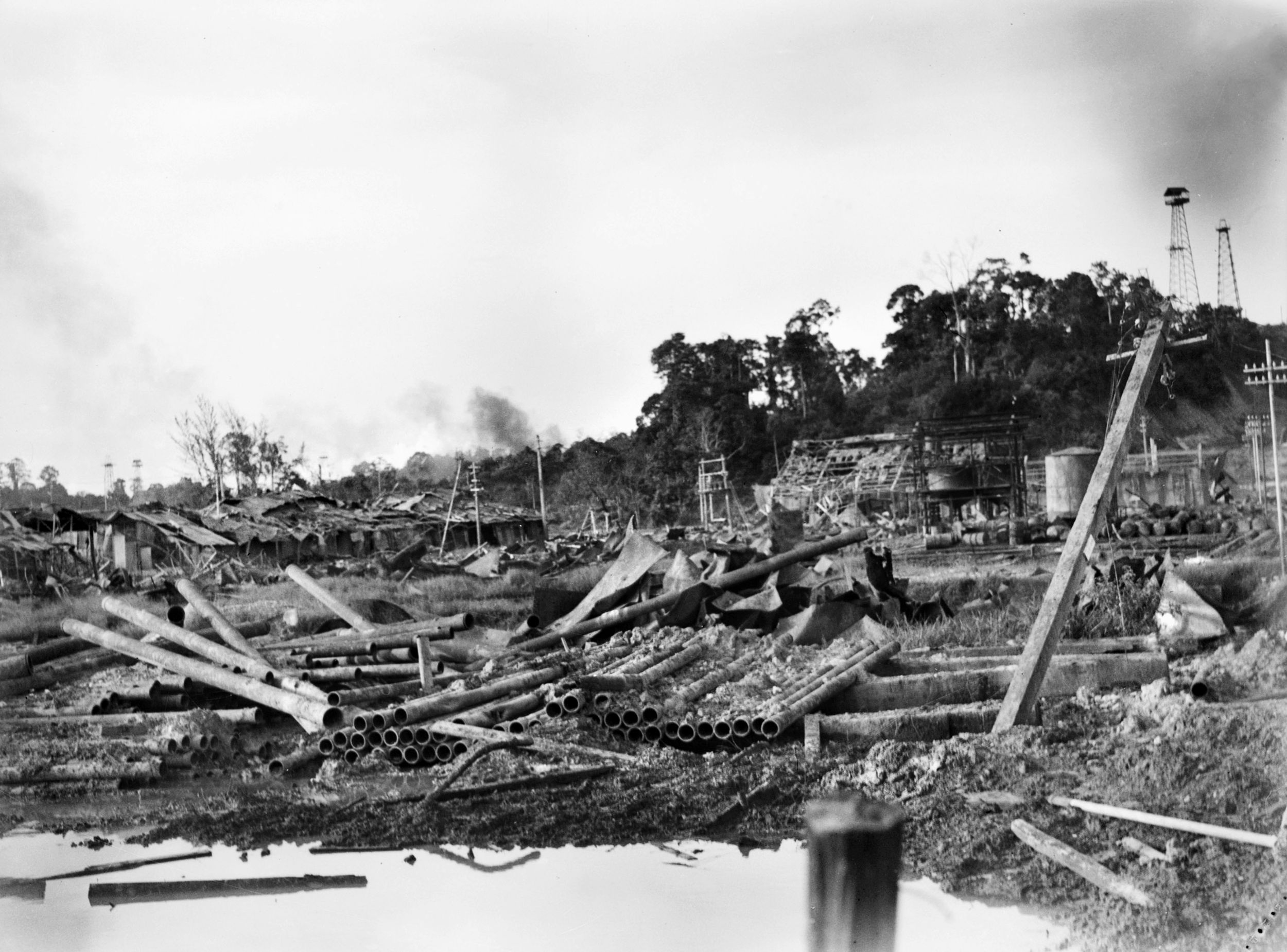
Taking Lae
The 2/4 unit’s diary records the landing of the troops from the undamaged LST’s at Red Beach at 11 pm on September 4. “All those faces of dead Japanese soldiers who had been buried in the sand … the tide had washed away the sand and exposed the faces,” recalled one soldier. “I’ll never forget that. Later, we were going along further and someone yelled, ‘Look out for snipers.’ I have never forgotten the sight of one. They had shot him, and he was still hanging there by his belt on the tree. You are going through the jungles like that at night, without sleep, your nerves are all on edge.”
Aboard the damaged LST, Coyne arrived at Morobe Bay in the darkness, transferred to another transport, and was then taken to join his comrades already ashore at Red Beach. “I remember stepping off the LST landing ramp into water up to my waist,” he said. “A firm hand gripped my arm. ‘You’re ok Aussie,’ said a warm, reassuring American voice. ‘Thanks Yank,’ I replied. ‘We should thank you boys,’ he said quietly. And that was the end of my meeting with a stranger, also far from home, whose face I couldn’t see, whom I would never recognize, but offered me friendship and support in a time of need.
“We walked throughout the night without sleep, looking for our unit, our nerves on edge as the enemy could be anywhere in the jungle or in the high kunai grass, which was very dense and makes a very effective screen to hide in. We finally found the unit just after daybreak, and brigade assigned us to be flank cover and scout for Jap positions. When the brigade attacked, we were to eliminate any that escaped the initial onslaught. Being the wet season, the rain came down in sheets and turned the ground into a sea of thick mud, and rivers flooded. Our jungle green uniforms were permanently wet. We slept in the mud with our waterproof ground sheets strung overhead between two trees in a futile attempt to keep the rain off us. A couple of our platoons had gone upstream and came to the Kunda suspension bridge crossing the turbulent Busu River.”
The river and continuous rain delayed 9 Division’s advance to Lae. The B Platoon was ordered to secure the east bank of the Busa, the bridge, and the tracks leading north and west from the bridge, but not to cross the span.
There were no signs of Japanese forces on the other side, and it was in the Australians’ interest to cross before the river rose any further and the enemy arrived. A signal was sent to Brigade HQ for permission to cross, but this was refused.
By the time permission to cross was received, a small number of Japanese had arrived near the bridge on the west bank and had been made painfully aware who was in control of the east bank. Eighteen men were detailed to cross first with covering fire. As the men began crossing the bridge, the Japanese, who were not yet in position, opened up with machine guns, killing and wounding several of the Australians. Some fell into the river and drowned; some became tangled in the cane structure as it was cut up by the enemy fire. The ones who made it across had no choice but to attack the Japanese before they could become well established. The bridge collapsed, and reinforcements were forced to wade across.
Tarakan and Sadau
With the capture of Lae and other successful campaigns, the Allies had forced the Japanese to retreat, but still they fought ferociously. During the course of the war, the Japanese military had sent approximately 150,000 troops to New Guinea. Now, the ability to resupply them by sea was lost. They were abandoned to their own fate.
In 1945, the taking of Tarakan Island was the most ambitious operation undertaken by Australian forces in the entire Pacific War. The Australians also suffered their highest percentage of casualties during the war. The military value of the campaign continues to be debated. On March 21, General MacArthur ordered 26 brigade to seize and hold the oil-producing island. Enemy strength was estimated at 1,500 to 2,000 troops. Twenty-four hours before the attack, the 2/4 Commando Squadron landed on the adjoining island of Sadau.
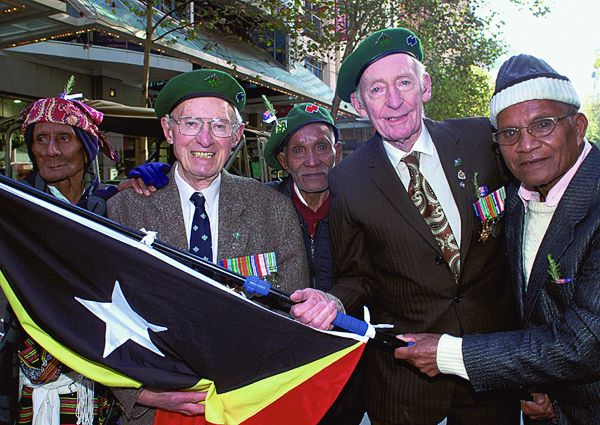
“Again, we were transported by an LST,” said Coyne. “Whilst sailing between Morotai and Borneo, we were accompanied by two American Kitty Hawk fighters. I happened to be on deck and saw one of the planes suddenly dive into the sea. The other plane circled the spot, and our LST turned and searched the area but nothing was found. We landed on Sadau Island and had with us a battery of 25-pounder field guns to help cover the main brigade landing the next day. To our surprise there were no Japs on Sadau.
“On May 1, the 26 Infantry Brigade Group backed by artillery and a naval bombardment fought their way ashore against fanatical Japanese counter forces. On May 3, the 2/4 Commandos sailed from Sadau Island to assist the brigade in another rendezvous with danger and death. The 2/4 joined the brigade after its troops had stormed ashore. We were given a job to capture Tarakan Hill, the highest point on the island. It was a sharp feature about 200 feet above the flat oilfields alongside. What upset us was that a battalion of 700 men had spent the previous day attacking it and were repulsed.
“It was now the task of our 250 troops,” he continued. “We soon found that the hill had tunnels with steel door entrances. Originally built by the Dutch as a hospital retreat in the event of an oilfield fire, there were exit shafts emerging at different points around the hill. Initially, no Japs were seen, but as soon as our patrols moved out into clear ground and crossed a creek near the base of the hill, their machine guns opened up and killed several of our boys. Tanks were called in to blast the steel doors. Our lads began climbing the hillside from different directions, dropping grenades down shafts. Rifle and machine gun exchanges were fierce. By nightfall, our sections were spread out on the hill, and the arrival of a moonless night reduced the shooting to tension- filled, intermittent exchanges throughout the darkness.
“By the third day, the entrances to the tunnels and the shafts had been sealed by demolition charges, and the hill was ours. Next, we moved onto Snags Track, a primitive one-lane vehicle track across the island bordered on the sides by low jungle scrub and overhead trees. Resistance was fanatical. Jap snipers had tied themselves to the tree branches and concealed machine gun entrenchments were built into jungle ridges covering the track. Hidden by logs leaving only slits as targets to attack, they could mow down approaching patrols. Throughout the Tarakan campaign, this was typical of the Japanese defensive system. As I moved along Snags Track rolling out a telephone cable, an explosion immediately in front of me made me turn quickly. One of the boys was blown to pieces. He had stood on a land mine.”
Short of supplies and their numbers severely depleted, the Japanese were broken by June 1, and the survivors retreated to the north and northeast of the island, where they were eventually hunted down by Australian patrols. In two months of fierce fighting, 26 Brigade had achieved its main objectives and had killed approximately 1,540 Japanese with a loss of 225 Australian dead.
Victory Over Japan
On August 14, 1945, President Harry Truman announced the unconditional surrender of Japan, and this was confirmed the following day by the Australian government. An issue of three bottles of beer per man helped the troops to celebrate in a proper manner. The 26 Brigade Group remained as an occupational force on Tarakan Island until December 2.
By December 18, most members of the 2/4 Commando unit, with their dark blue double diamond shoulder patch, had finally returned to Australia. On January 8, 1946, the unit was officially disbanded. The 2/4 was the only Australian infantry unit to have fought in each of the New Guinea and Borneo campaigns.
Ken Wright lives and works in Melbourne, Victoria, Australia.
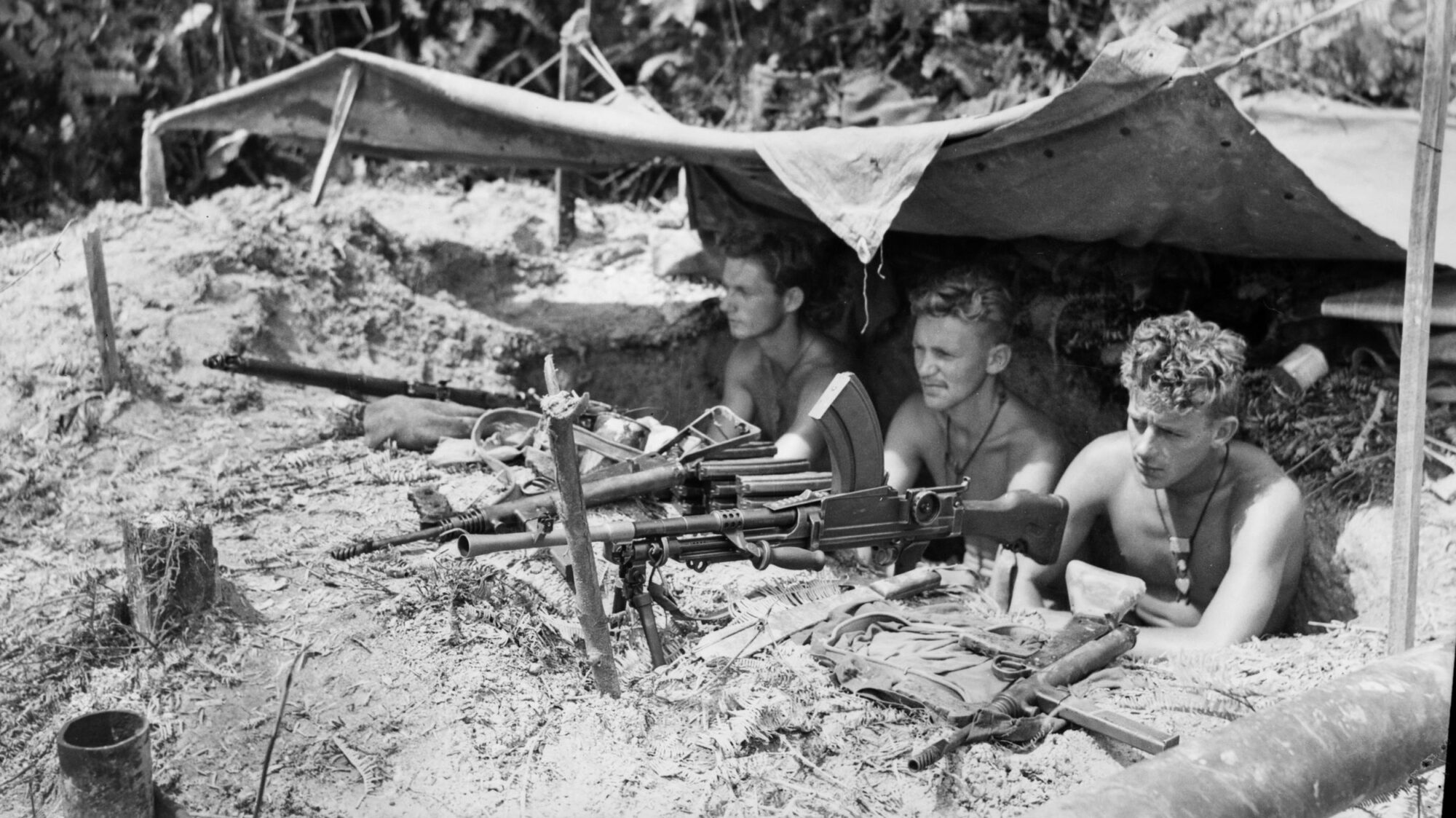
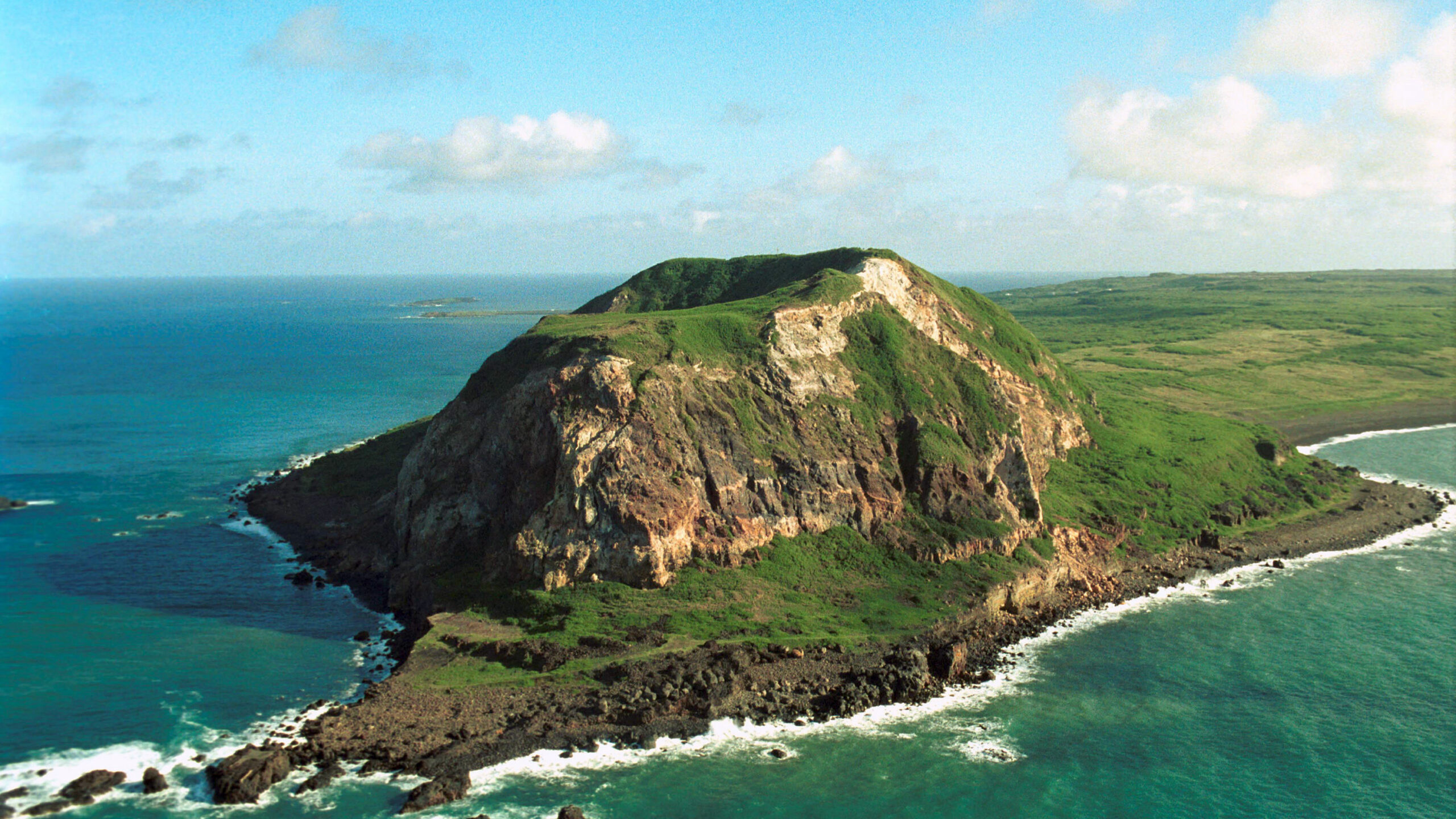
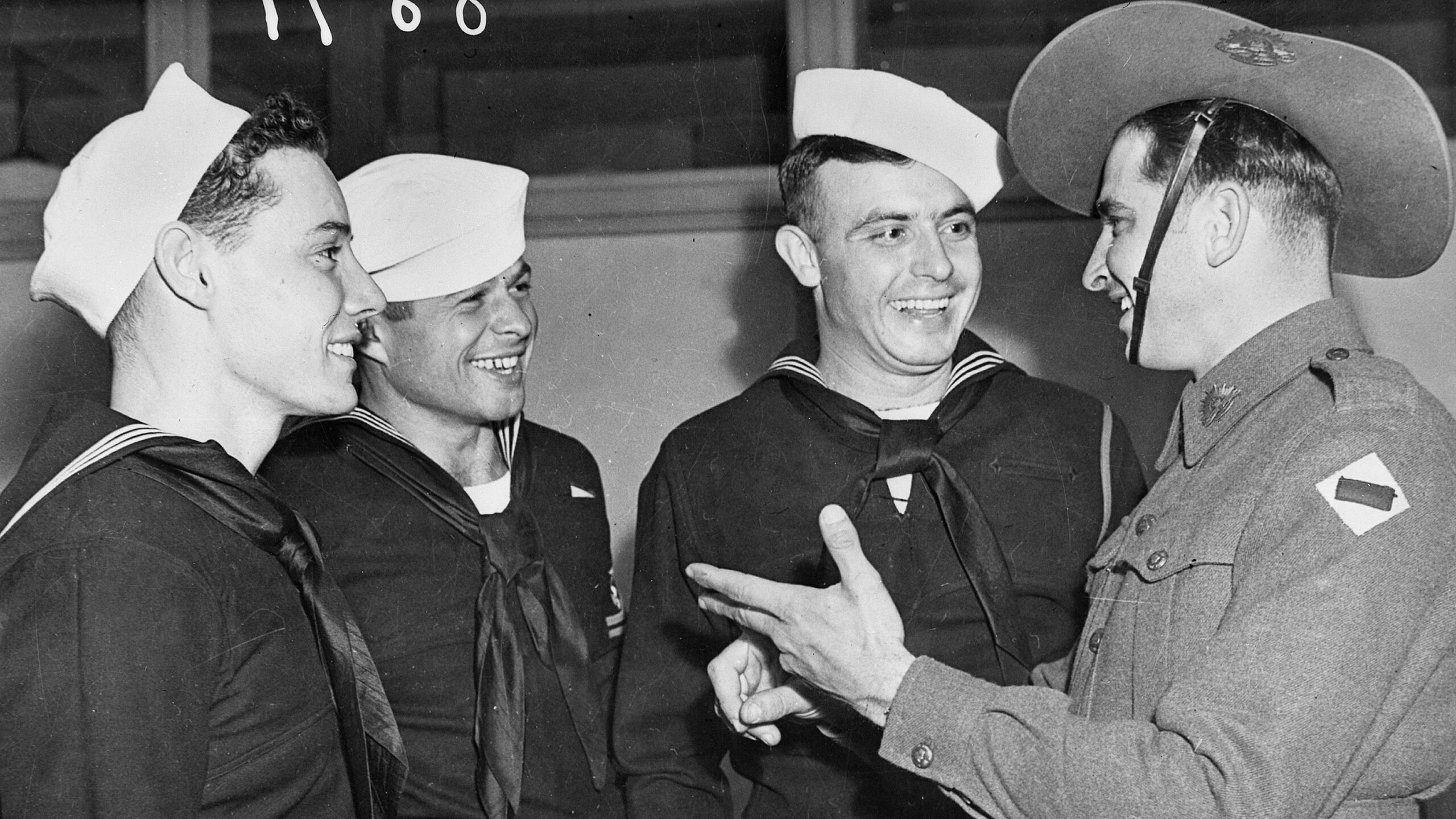
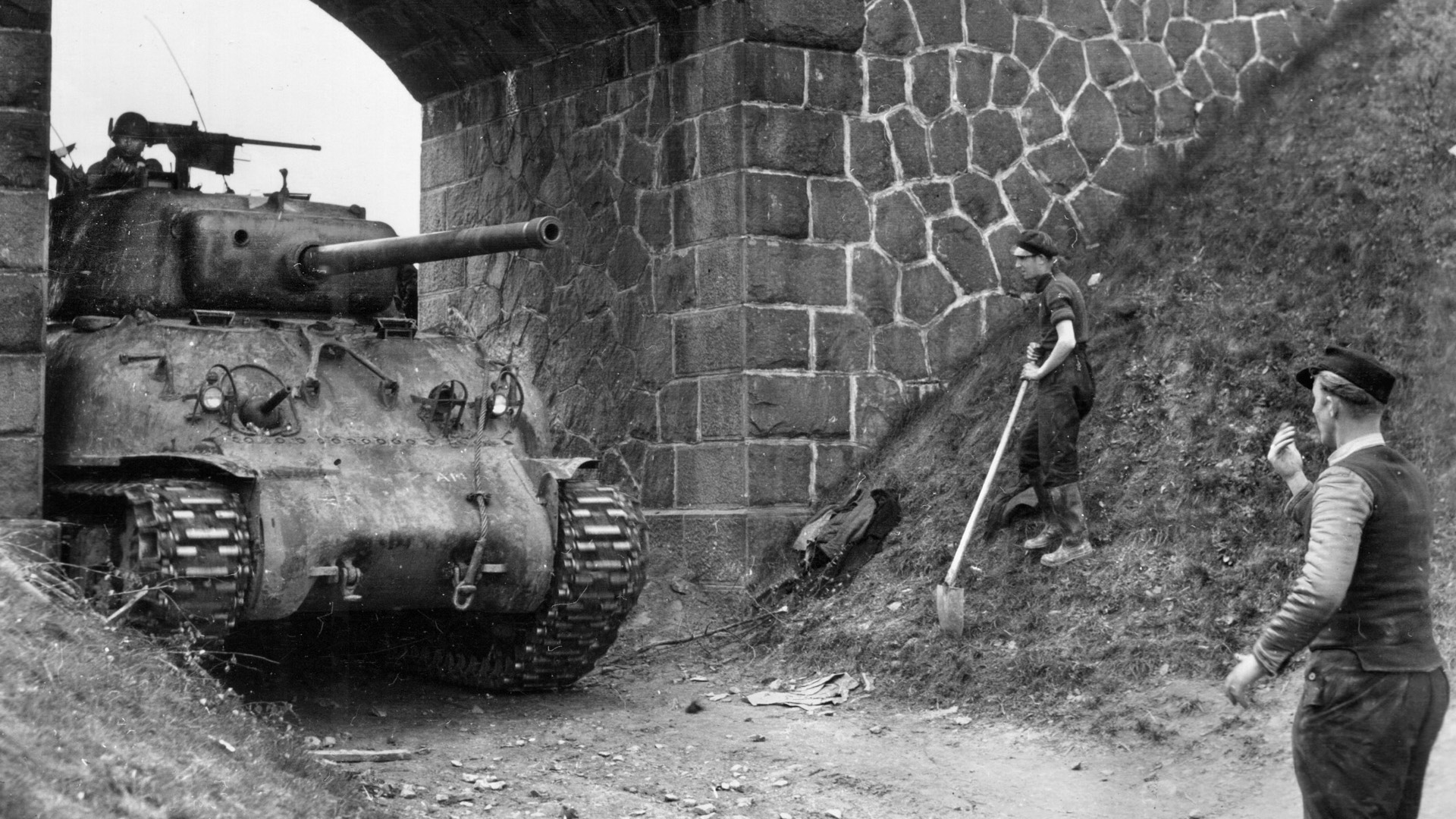
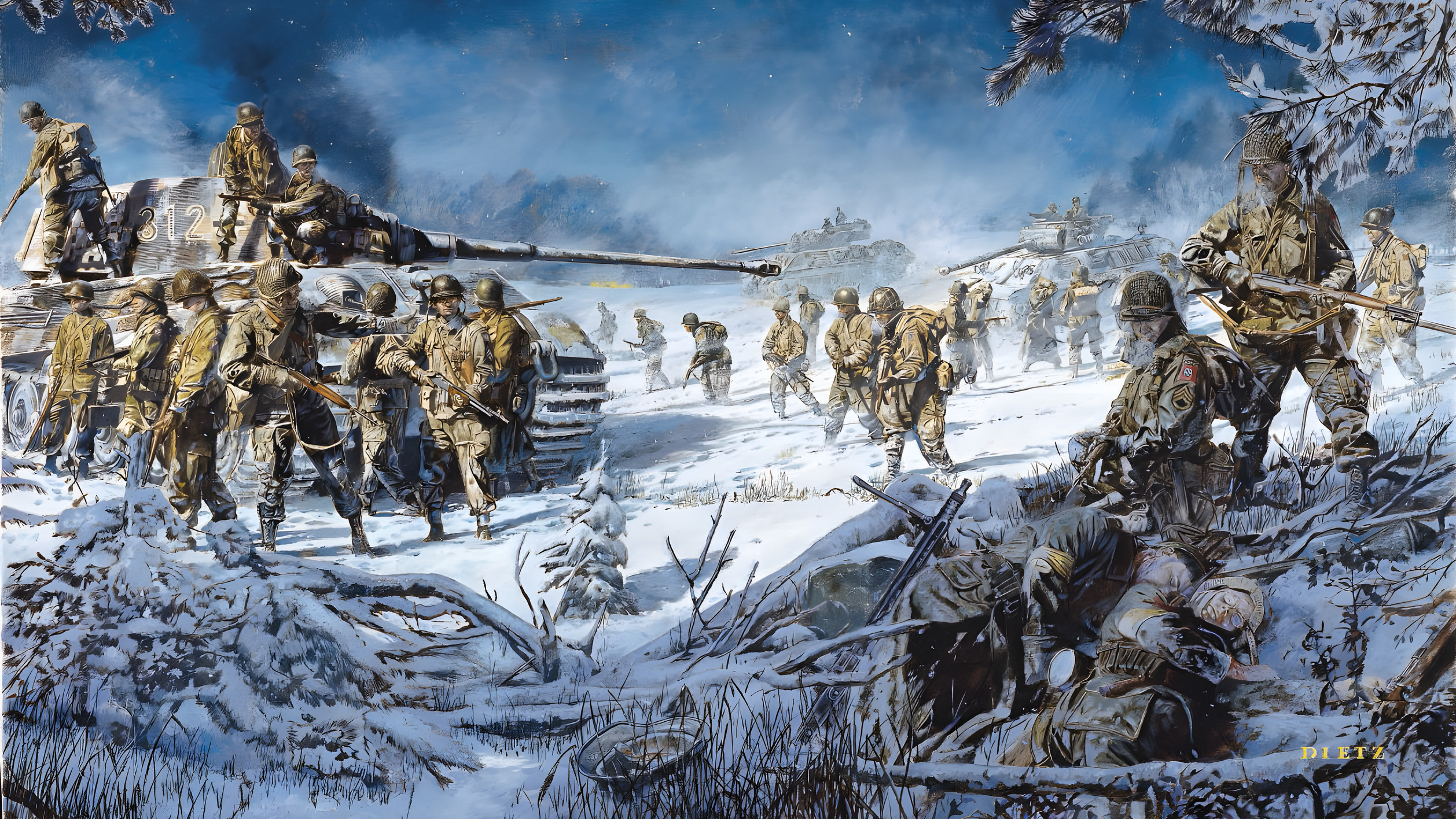
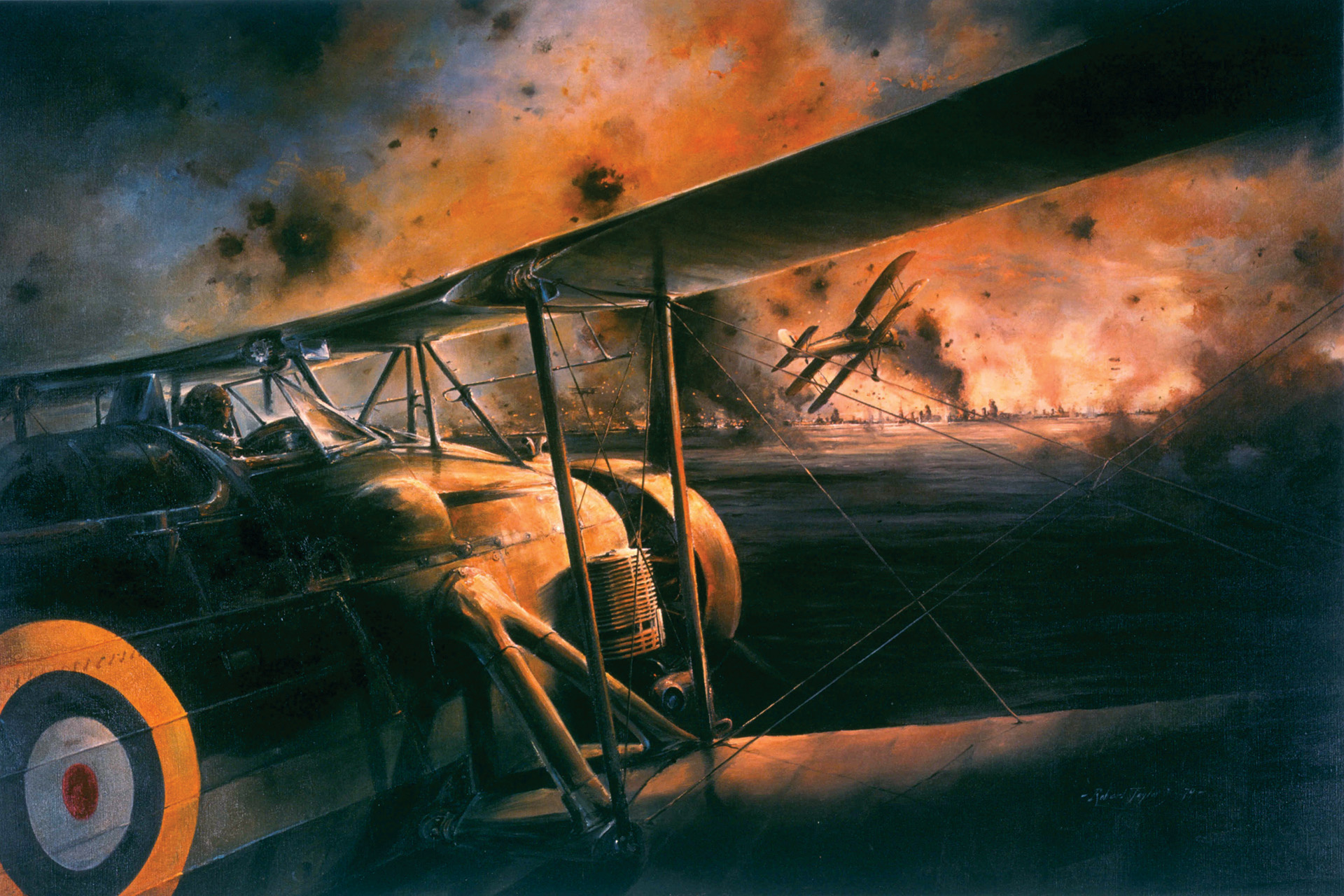
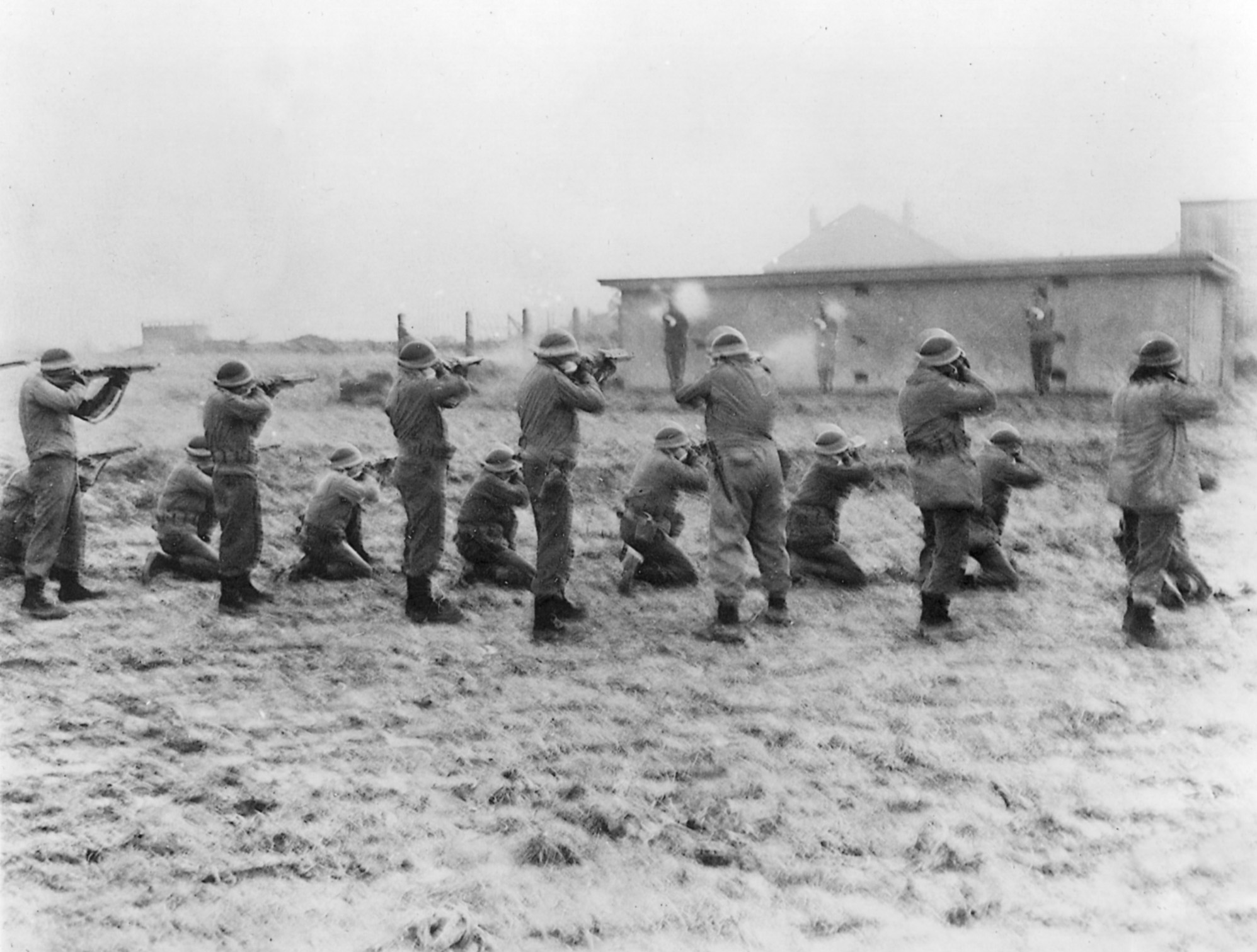
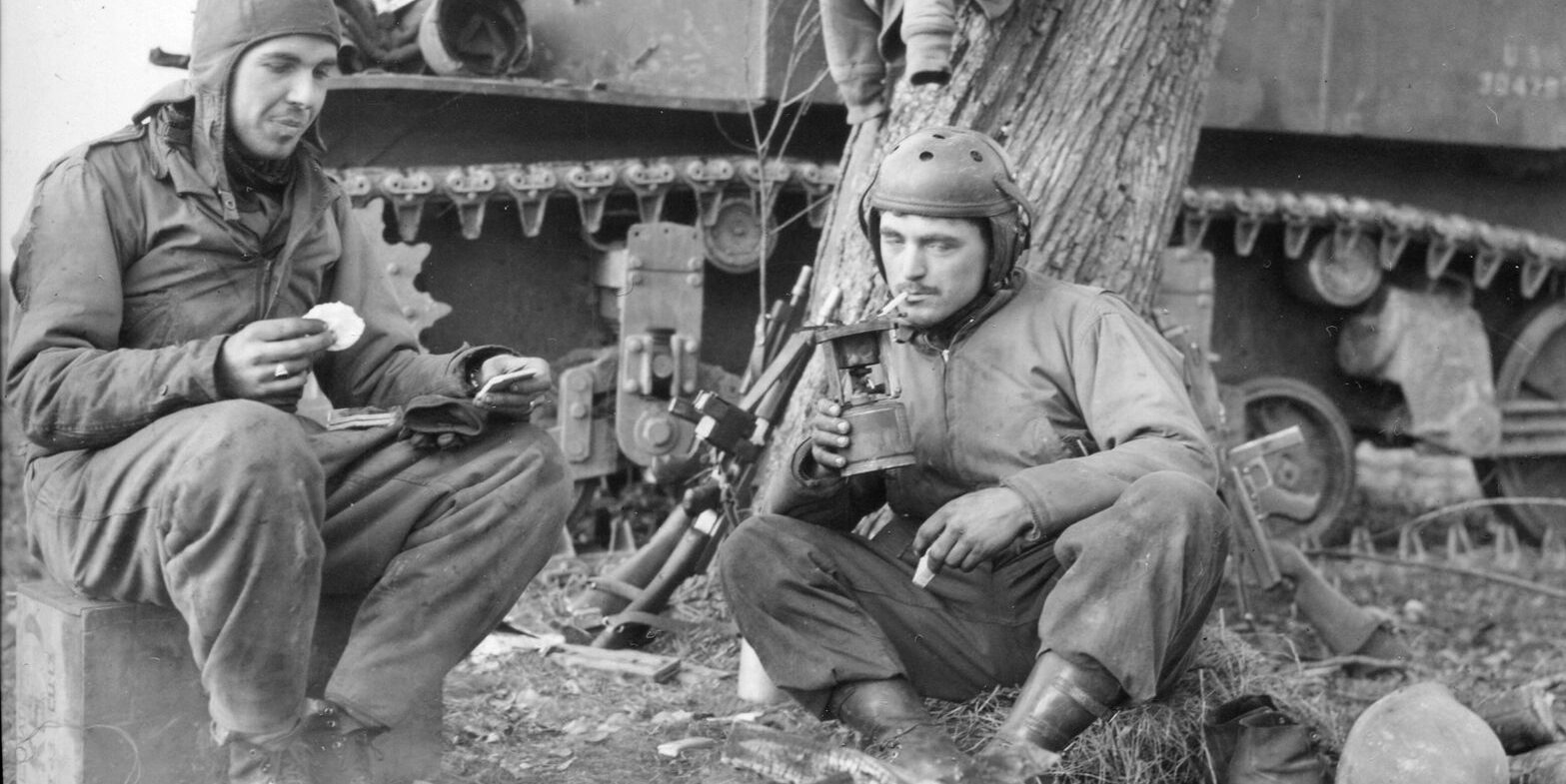
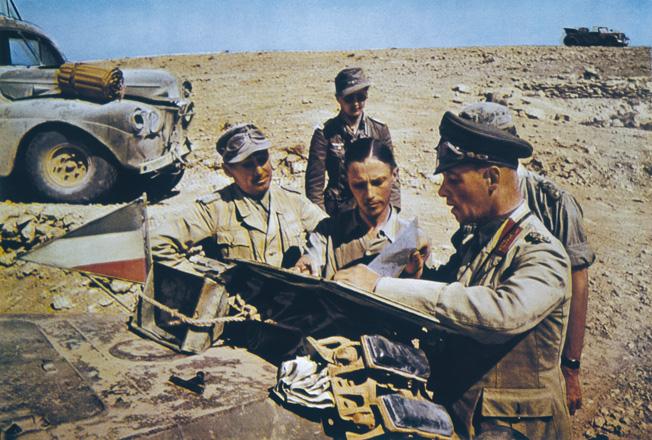
Join The Conversation
Comments
View All Comments